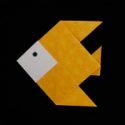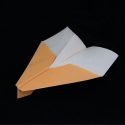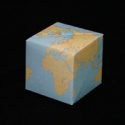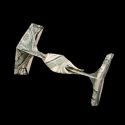Unfolding Mathematics with Origami Boxes
by Arnold Tubis
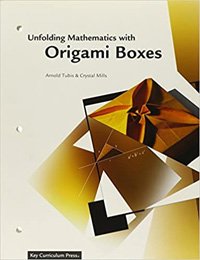
The Boxes
All the origami boxes featured in this book are variations of the traditional masu box (yellow). Tubis begins his book with the masu box and then shows ways to make a closed masu box (orange) and a closed masu box showing two colors (still one sheet of paper). The origami boxes begin to have more details: instructions are given to fold boxes that have a ribbon-like detail across the top. The ribbon can be in a “X” formation or a “+” formation. A two-color version is also shown (still one sheet of paper only).


The next set of boxes are not hard to make but requires that you know how to make a sink fold. If you don’t, the book includes instructions to make the preliminary base, the waterbomb base, a sink fold, and a twisted square base.

Shown are various twist boxes. Two-color boxes are made with one sheet of duo origami paper. Note how some have the ribbons in “+” (red box) or “X” (white box) orientation and note how the ribbon can be made broad or narrow (blue box).

The remaining boxes are exquisite in their detailing. First, is a set of Flower Boxes. Again, these can be made with the ribbon and flower in “X” or “+” orientation and with two-color options.

Check out these Victorian Boxes. All the boxes shown are the top half of the box. You will need to make a second box (probably a plain one like the traditional masu box) for the bottom of the box.

Most of the origami boxes in this book are symmetrical, but there are two boxes with mixed symmetry. The first has the ribbon extending from edge to edge. The second has the ribbon going from corner to corner.

The Math
Unfolding Mathematics with Origami Boxes has a total of 28 projects. Instructions are also given to:
– make closed boxes rather than just the box tops;
– make locking tabs to keep the folds in place; and
– make taller or shorter boxes.
This book has 180 pages but only a third of the book is devoted to making origami boxes. The majority of the book is devoted to math in the classroom! Arnold Tubis is a professor emeritus of physics and Crystal Mills is a former mathematics teacher. Together, these two individuals unite origami and math.
– point, line, and plane;
– angles, angle bisectors;
– area and volume;
– triangles, rectangles, squares, parallelograms,
– rhombi, trapezoids; and more.
The math section is divided into two parts. The first part (Folding Explorations) is an introduction to basic concepts using paper a medium for display and manipulations. The second part (Box Exploration) is the analysis of origami boxes presented in the beginning of this book. The boxes are unfolded, the crease pattern is examined, and questions are posed. Teacher Notes are provided (answers and commentaries).
Shown on the right are: Large-Blossom Flower Box, Two Color Masu, and Flower Box II.
Summary
All in all, this book is a great buy. The boxes are quite stunning and the math is an added bonus. It is a combination of art and science.
Note: this is an “intermediate level” origami book and you should be familiar with sink folds and squash folds. Because the boxes are made from one sheet of paper, a large sheet of paper is recommended. For example, for a traditional masu box, a 8½” x 8½” sheet results in a a 3″ box.

- buy Unfolding Mathematics with Origami Boxes here
- see free origami boxes instructions here
- see other book reviews
- go to Site Map
- go to Home Page
-
Books with Origami Boxes
- Origami Boxes by Tomoko Fuse (see book review)
- Origami Boxes and More! by F Temko (book review)
- Unfolding Mathematics with Origami Boxes (book review)
- Fun With Folded Fabric Boxes by C Mills & A Tubis
- Fabulous Origami Boxes by Tomoko Fuse
- Quick & Easy Origami Boxes by Tomoko Fuse
Please Help
Please help by reporting broken links so that we can fix them. One easy message from you can save us hours and hours of clicking. Thanks!
-
More Origami Diagrams and Instructions…
-
These free origami instructions are made available to you by the paper folding community at large. If you have a diagram you would like to share, or if your diagram is listed here and you wish to have it removed, please Contact Us. Diagrams are intended for personal use. Copyright of the models lie with the origami creators and designers. Please contact the designer and/or creator directly for non-private usage of a model and/or artwork.









